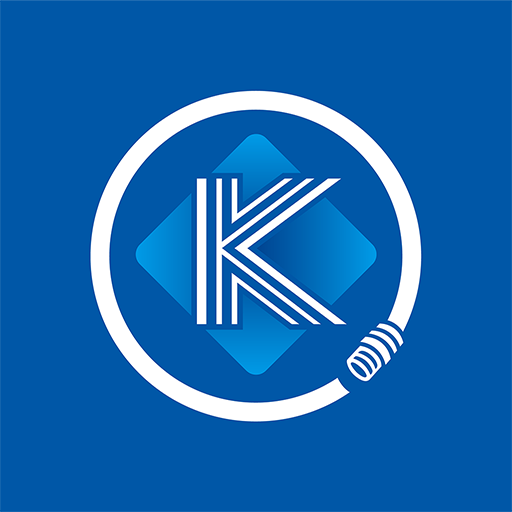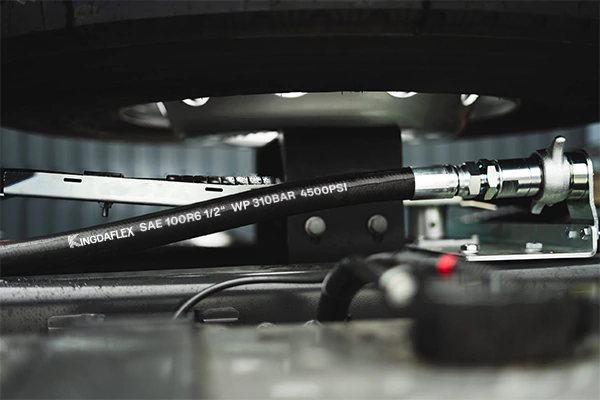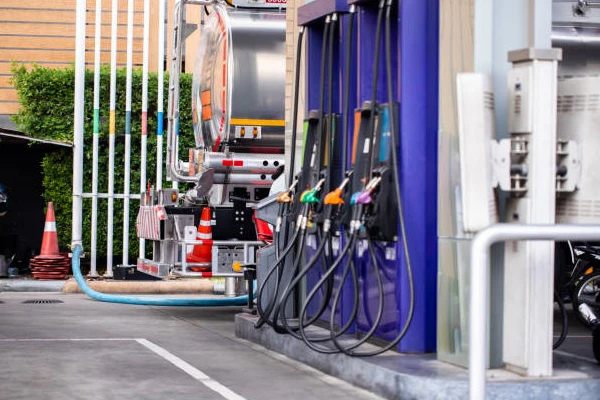Delving into the world of hydraulic systems, you’ll frequently encounter various fitting types, each serving a specific purpose. Among the most prevalent are JIC hydraulic fittings, renowned for their robust design and reliable performance. Understanding what makes JIC fittings unique is crucial for anyone working with hydraulic machinery.
This blog post will explore the fundamentals of JIC hydraulic fittings. We’ll cover their distinct features, how they create a secure seal, and why they remain a popular choice across numerous industrial and mobile applications.
What is a JIC Hydraulic Fitting?
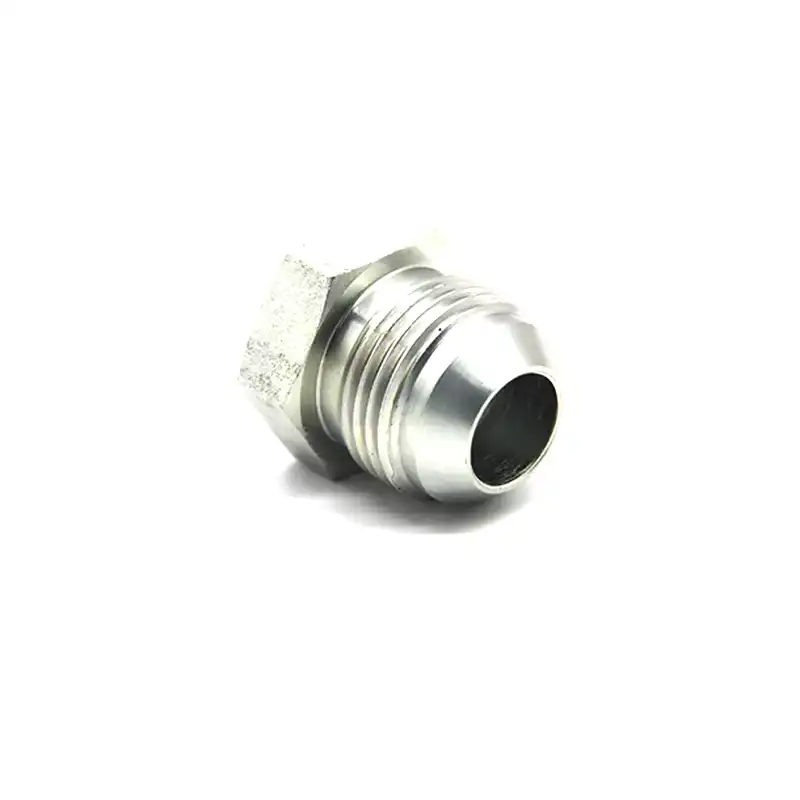
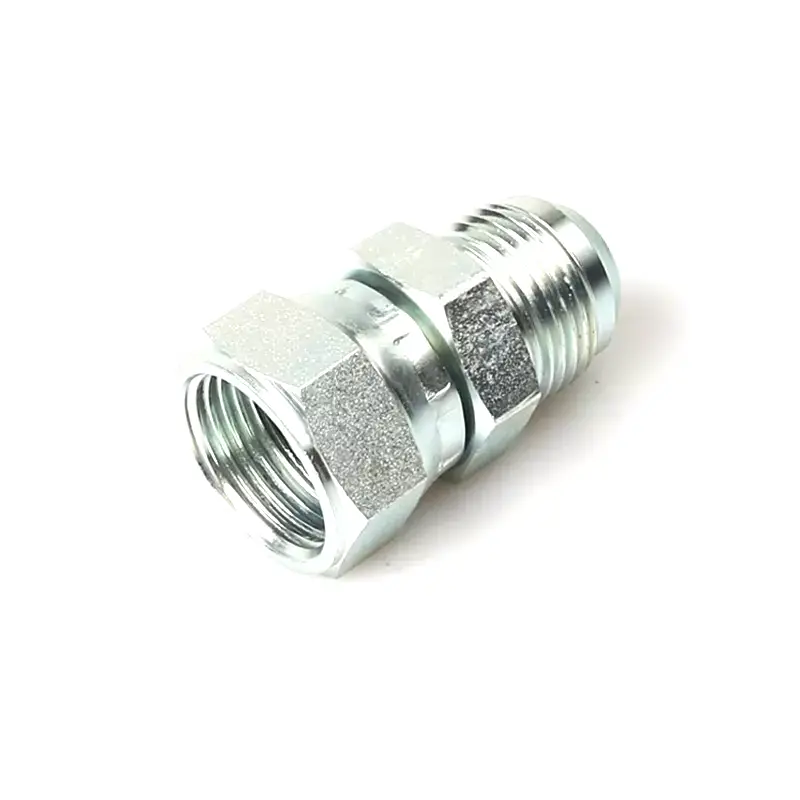
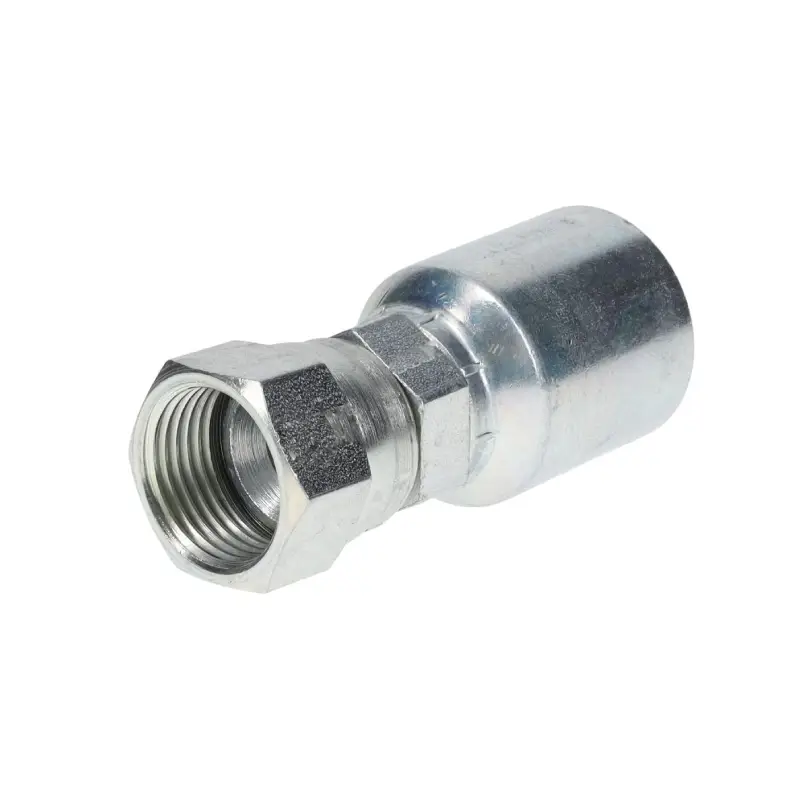
What does jic mean in hydraulic fittings?
A JIC (Joint Industry Council) hydraulic fitting is a widely used type of flare fitting, primarily defined by the SAE J514 standard. Its distinguishing feature is a 37-degree flared seating surface, which creates a metal-to-metal seal when a male and female fitting are joined.
Unlike other fitting types that rely on O-rings or tapered threads for sealing, the JIC design achieves its seal through the compression of the flared tubing against the coned seat of the fitting. Consisting of a body, nut, and sleeve, JIC fittings are renowned for their reliability, ease of assembly, and robust performance in high-pressure hydraulic and fluid power applications, making them a staple in industries from manufacturing and agriculture to automotive and aerospace.
How to Measure JIC Hydraulic Fittings?
Accurately measuring JIC hydraulic fittings is critical for ensuring proper fit, preventing leaks, and maintaining the integrity of your hydraulic system. Incorrect measurements can lead to costly downtime and potential safety hazards. This guide will walk you through the essential steps to correctly identify and measure JIC fittings.
Step 1: Identify the Fitting Type
Before any measurements, confirm that you are indeed dealing with a JIC fitting. JIC fittings are characterized by their 37-degree flare seat. You can often identify this by visually inspecting the conical sealing surface; if it appears to be a 37-degree cone (as opposed to a 45-degree flare found on automotive or refrigeration fittings), it’s likely a JIC. Other common hydraulic fittings, like ORFS or NPT, have distinct sealing methods (O-rings, tapered threads) that differentiate them from JIC.
Step 2: Measure the Thread Diameter
To measure the thread diameter of a JIC fitting, you will need a caliper. For male fittings, measure the outside diameter (OD) of the threads. For female fittings, measure the inside diameter (ID) of the threads. It’s important to measure across the widest part of the threads, not the root. This measurement will give you a nominal size that can be cross-referenced with a JIC thread chart. Keep in mind that thread measurements are often nominal, meaning the actual measurement may not be an exact whole number but will correspond to a standard size like 1/4″, 3/8″, 1/2″, etc.
Step 3: Determine the Thread Pitch
After measuring the diameter, the next crucial step is to determine the thread pitch. This refers to the number of threads per inch (TPI) or the distance between individual threads. You can use a thread pitch gauge, which is a tool with various blades, each corresponding to a specific thread pitch. Match the blades to the threads of your fitting until you find one that fits perfectly without any light showing through. Alternatively, for a quick estimation, you can count the number of threads within a quarter-inch or half-inch section and multiply accordingly to get the TPI.
Step 4: Measure the Flare Seating Surface
Finally, measure the 37-degree flare seating surface. This is a critical measurement for JIC fittings as it defines the sealing mechanism. For male fittings, measure the outside diameter of the cone at its widest point (the face of the flare). For female fittings, measure the inside diameter of the cone at its narrowest point (where the flare would sit). This measurement, in conjunction with the thread diameter and pitch, confirms the JIC standard and ensures compatibility with mating fittings.
JIC Hydraulic Hose Benefits
JIC (Joint Industry Council) hydraulic fittings offer numerous benefits when used with hydraulic hoses, making them a popular and reliable choice across various industries. Their core advantage lies in the 37-degree metal-to-metal flare seal, which provides a robust and leak-free connection capable of withstanding significant pressure and vibration. This mechanical seal design is less susceptible to temperature fluctuations compared to elastomeric seals, ensuring consistent performance in diverse operating environments.
The widespread adoption of JIC fittings also stems from their versatility and ease of use. They are readily available in a vast array of sizes, configurations, and materials, making them adaptable to nearly any hydraulic system requirement. Furthermore, their design allows for repeated connection and disconnection without compromising the seal’s integrity, which is highly beneficial for maintenance, troubleshooting, and component replacement.
Key benefits of JIC hydraulic hoses and fittings include:
- Reliable Leak-Free Seal: The 37-degree metal-to-metal flare creates a robust and tight seal, minimizing the risk of fluid leakage even under high pressure.
- High Pressure and Vibration Resistance: Their sturdy design ensures secure connections that can endure the dynamic stresses inherent in hydraulic systems.
- Temperature Stability: Unlike O-ring seals, the metal-to-metal contact is less affected by extreme hot or cold temperatures, maintaining performance in harsh conditions.
- Ease of Assembly and Disassembly: JIC fittings are relatively straightforward to install and remove, simplifying maintenance and reducing downtime.
- Reusability: The ability to disconnect and reconnect without loss of performance makes them cost-effective and convenient for systems requiring frequent servicing.
- Wide Availability and Standardization: Being an industry standard (SAE J514), JIC fittings are easily sourced globally and are interchangeable between manufacturers, ensuring compatibility.
- Versatility: Available in various materials (steel, stainless steel, brass) and configurations (straights, elbows, tees), they can be tailored to specific application needs.
JIC Hydraulic Hose Uses
JIC hydraulic hose assemblies are incredibly versatile and find extensive use across a vast array of industries and applications due to their reliable sealing capabilities and robust construction. Their ability to handle high pressures, resist vibration, and ensure leak-free connections makes them indispensable in environments where fluid power is critical for operation.
From heavy-duty machinery to precision instruments, the consistency and dependability of JIC connections are a primary reason for their widespread adoption.
The design of JIC fittings, particularly the 37-degree flare, makes them suitable for applications requiring easy assembly, disassembly, and maintenance. This reusability is a significant advantage in systems that undergo frequent servicing or component replacement. Furthermore, their standardization ensures interchangeability across different manufacturers, simplifying parts sourcing and inventory management for diverse equipment fleets.
Common uses for JIC hydraulic hoses include:
- Construction Equipment: Used extensively in excavators, bulldozers, loaders, and cranes for hydraulic cylinders, steering systems, and auxiliary functions.
- Agricultural Machinery: Found in tractors, harvesters, planters, and sprayers for hydraulic lifts, steering, and various implements.
- Manufacturing and Industrial Automation: Employed in hydraulic presses, injection molding machines, automated assembly lines, and material handling equipment.
- Oil and Gas Industry: Utilized in drilling rigs, offshore platforms, and pipeline equipment for hydraulic controls and fluid transfer.
- Transportation: Applied in heavy-duty trucks, buses, and railcars for braking systems, power steering, and suspension.
- Marine Applications: Used in ships, boats, and offshore vessels for steering, winches, and other hydraulic power systems.
- Aerospace: While specific aerospace applications often use more specialized fittings, JIC designs or derivations can be found in ground support equipment and some non-flight critical hydraulic systems.
- Mining Equipment: Critical for hydraulic power in drills, conveyors, and other heavy machinery operating in demanding environments.
- Waste Management: Integral to the hydraulic systems of refuse trucks, compactors, and recycling machinery.
- Forestry Equipment: Used in logging machines, chippers, and other equipment for hydraulic functions.
How to Choose the Suitable JIC Hydraulic Hose
Choosing a suitable JIC hydraulic hose requires a comprehensive evaluation of the specific application’s demands to ensure optimal performance, safety, and longevity. It’s not just about matching the JIC fitting type, but also about selecting the correct hose that can withstand the operational parameters. Consider the following critical factors:
- Pressure Rating: The hose’s maximum working pressure must meet or exceed the hydraulic system’s peak operating pressure, including any potential surge pressures.
- Temperature Range: The hose material (inner tube, reinforcement, and outer cover) must be compatible with the fluid temperature and the ambient environmental temperature.
- Fluid Compatibility: The hose’s inner tube material and any seals must be chemically compatible with the hydraulic fluid to prevent degradation, swelling, or contamination.
- Hose Diameter (ID/OD): The internal diameter (ID) of the hose must be appropriate for the required flow rate to prevent excessive pressure drop or fluid velocity.
- Flexibility and Bend Radius: Assess the space constraints and dynamic movement of the application. The hose’s minimum bend radius should not be exceeded during installation or operation.
- Abrasion Resistance: If the hose will be exposed to abrasive environments or rubbing, select a hose with a highly durable outer cover.
- Reinforcement Type: The hose’s reinforcement (e.g., wire braid, spiral wire) determines its pressure rating and flexibility characteristics. Choose based on system pressure and dynamic requirements.
- Environmental Conditions: Consider exposure to UV light, ozone, chemicals, and extreme weather, which can affect hose life and material selection.
- Length: Accurately determine the required hose length, accounting for system movement, pressure changes, and proper routing to avoid tension or kinking.
- Certification and Standards: Ensure the hose meets relevant industry standards (e.g., SAE, ISO, EN) for quality and performance.
Conclusion
In conclusion, JIC hydraulic fittings are a cornerstone of many hydraulic systems, recognized for their reliable 37-degree flare seal. Their widespread adoption is due to their excellent pressure handling, vibration resistance, and ease of assembly and disassembly. Understanding their specifications and proper installation is crucial for ensuring leak-free and durable connections.
The robust design and proven performance of JIC fittings make them ideal for a diverse range of applications across various industries. From heavy machinery to agricultural equipment, their ability to create strong, secure links ensures optimal system integrity and operational efficiency. This reliability translates directly into reduced downtime and enhanced productivity.
For those seeking to leverage the benefits of JIC fittings in their operations, sourcing from reputable suppliers is key. You can easily get wholesale JIC hydraulic fittings to ensure you have access to high-quality components for all your hydraulic system needs, guaranteeing performance and cost-effectiveness.

